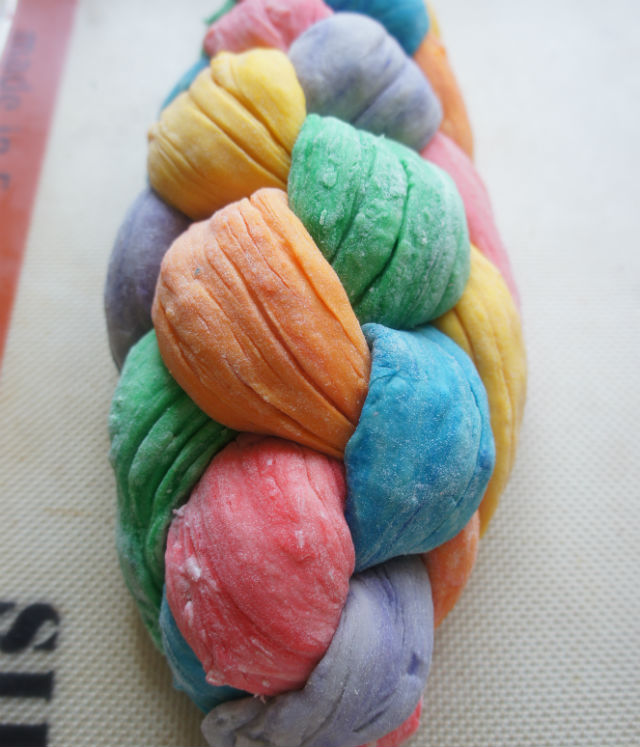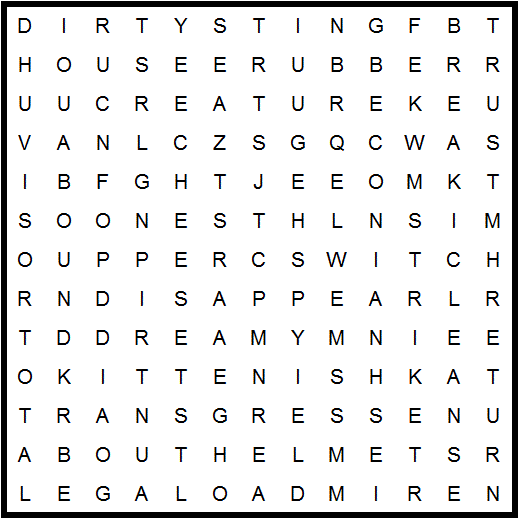
Many of us are too preoccupied with our lives to think too much about the past, especially ancestors of our who lived and died perhaps hundreds of years ago. Every now and then, however, people who happen to have a bit more time start digging around and sometimes find out the most fascinating facts about where their forefathers came from and what kid of people they were. Think about it: aren’t you just a little bit curious? If so, Genealogy Day is sure to prove both fun and educational.
The idea of keeping track of one’s family tree is not a new one. The family tree of Confucius, for example, has been maintained for over 2,500 years, a Guinness World Record. In Western societies, genealogy was especially important to royalty, who used it to decide who was of noble descent and who was not, as well as who had the right to rule which geographical area. Much like the ancient Egyptians’ assertions that their pharaohs were part god and part man, the medieval Anglo-Saxon Chronicle claimed that the god Woden (perhaps better known as the Norse god Odin) himself was a direct ancestor of several English kings.
Genealogy Day was created in 2013, by Christ Church, United Presbyterian and Methodist in Limerick, Ireland to help celebrate the church’s 200th anniversary. For this day, Christ Church brought together local family history records not only from its own combined churches, but also from the area’s Church of Ireland parishes, including the Religious Society if Friends in Ireland (Quaker) and the Church of Latter Day Saints (Mormon). The people in attendance could then use the amassed marriage and baptism records dating back to the early 1800s, such as Limerick Methodist Registers and Limerick Presbyterian Registers, to find out about their great-great-grandparents. The idea proved so popular that the day was repeated for the next two consecutive years and has inspired many people to take a look into their family tree to find out a bit more about where they come from.
Celebrating Genealogy Day will surely prove an entertaining way to spend a few hours of your time. Who knows, maybe you will become so fascinated that genealogy will become a new hobby?
thanks, photographer Patty (Part 1)
SMITH COLLEGE 2017 BULB SHOW
Word of the Day
| |||
| Definition: | (noun) A bell tower, especially one near but not attached to a church or other public building. | ||
| Synonyms: | belfry | ||
| Usage: | The architect intended the Tower of Pisa to stand straight and tall, but the marble campanile's foundation was poorly laid, and it soon began to lean. | ||
Idiom of the Day
housewarming (party)— A party thrown to celebrate when someone moves into a new apartment, flat, or house. |
History
Mikhail Gorbachev Becomes Leader of the Soviet Union (1985)
| In 1985, after the death of the third Soviet leader in two years, Mikhail Gorbachev came to power, ushering in an era of political reform with his policies of glasnost and perestroika. He cultivated warmer relations with the US and others and even supported the democratically elected governments that replaced the communist regimes of eastern Europe. In 1991, he resigned the presidency of the USSR, which ceased to exist the same day. |
Joseph Carl Robnett Licklider (1915) |
|---|
Purim
Six hundred years before the Christian era, most Jews were slaves in Persia. The Persian prime minister Haman persuaded King Ahasuerus (Xerxes I) to let him destroy the empire's entire Jewish population. The king did not realize that his own wife, Esther, was Jewish until she pleaded with him to spare her people. The Book of Esther is read aloud in synagogues on the eve and morning of Purim, and listeners drown out every mention of Haman's name by jeering and stamping their feet. Purim is also a time for sharing food with friends and for charity to the poor.
The Quest to Crystallize Time
Christopher Monroe spends his life poking at atoms with light. He arranges them into rings and chains and then massages them with lasers to explore their properties and make basic quantum computers.READ MORE:

1702 - The Daily Courant, the first regular English newspaper was published.
1867 - In Hawaii, the volcano Great Mauna Loa erupted.
1901 - U.S. Steel was formed when industrialist J.P. Morgan purchased Carnegie Steep Corp. The event made Andrew Carnegie the world's richest man.
1904 - After 30 years of drilling, the north tunnel under the Hudson River was holed through. The link was between Jersey City, NJ, and New York, NY.
1905 - The Parisian subway was officially inaugurated.
1927 - Samuel Roxy Rothafel opened the famous Roxy Theatre in New York City.
1930 - U.S. President Howard Taft became the first U.S. president to be buried in the National Cemetery in Arlington, VA.
1947 - The DuMont network aired "Movies For Small Fry." It was network television's first successful children's program.
1969 - Levi-Strauss started selling bell-bottomed jeans.
1986 - Popsicle announced its plan to end the traditional twin-stick frozen treat for a one-stick model.
2002 - Two columns of light were pointed skyward from ground zero in New York as a temporary memorial to the victims of the terrorist attacks of September 11, 2001.

READERS INFO
1: The “Red Bull” energy drink gets its name from the Thai energy drink that inspired Dietrich Mateschitz to create Red Bull, “Krating Daeng”, with “daeng” meaning “red”, and “krating” being a reddish-brown bovine.
2: “Hack the System” blogger Maneesh Sethi once hired a woman for $8 an hour to both yell at him and slap him anytime she saw him get off task from what he was supposed to be doing while working. He was having trouble staying focused as his own boss, so thought this would be an easy and cheap solution. It turns out, it worked. His procrastination time while working dropped from 62% to 2% thanks to his slapping employee. This man is a genius.
3: Broccoli, kale, cauliflower, cabbage, Brussels sprouts, and savoy all come from the same species of plant, brassica oleracea.
4: The word “broccoli” is the plural of the Italian “broccolo”, which in turn is from “brocco”, meaning “protruding tooth, small nail”.
5: Buzz Aldrin was the first person to pee while on the surface of the Moon. Take THAT Neil Armstrong.
6: Cecil Chubb was the last person to own Stonehenge, purchasing it in 1915 on a whim for about the equivalent of $800,000 today. According to the BBC, he gave it to his wife as a gift, which she in turn didn’t appreciate. Three years later, he donated it to England.
7: Magic Johnson signed a $25 million, 25 year contract with the Lakers in 1981, the highest paying contract in sports history at the time. This comprised the bulk of his earnings from his playing career (though of course he didn’t complete the contract). Today, Magic Johnson Enterprises is estimated to be worth nearly $1 billion, including, among many other things, owning several fast food restaurants and 24-Hour Fitness locations… which is sort of the perfect scheme if you think about it. 😉
8: Male honeybees (drones) don’t have stingers and are developed from unfertilized eggs from laying worker bees. As to why the males don’t have stingers, the worker bee stingers are actually slightly modified egg laying organs (ovipositor).
9: “Drone” comes from the Old English “dran”, meaning “male honeybee”.
10: During mating, the force of the honeybee male’s ejaculation is so strong, the resulting process, including the rupture of the drone’s penis, is sometimes audible making a “pop” noise. The price of the drone’s 1 to 5 second sexual escapade is his life, as his reproductive bits are ripped from his body after climax… what a buzz kill.
Wivenhoe Park is an oil painting on canvas completed by the English Romantic painter John Constable in 1816. It depicts Wivenhoe Park, an English landscape garden on the eastern edge of Colchester. It is now held by the National Gallery of Art in Washington, D.C.
Illinois


knit
thanks, Rae

knit

knit

knit
thanks, Marcy

crochet - ST. PATRICK'S DAY
crochet

crochet

crochet, 6 - 12 mths
thanks, Clara
crochet
thanks, Jennie


EASIEST HAMANTASCHEN RECIPE, EVER
thenosher

Ingredients
2 store-bought pie crusts (1 package)
fillings such as nutella, jam, cookie butter, onion jam or pesto and cheese
1 egg white, lightly beaten
Directions
Preheat oven to 400 degrees.
Remove pie crust from package. Using a 2.5 or 3 inch cookie cutter, cut out rounds. Repeat with second crust. Gather scraps and roll out remaining dough.
Fill each round with 1/2 tsp - 1 tsp filling depending on the size of cookie cutter. Brush inside of each round on just the outer edge with egg white.
Shape cookies into triangles, pinching each corner tightly.
Place on a baking sheet lined with a silpat baking mat or parchment paper and place in freezer for 5 minutes (or fridge for 10 minutes).
Bake for 10-11 minutes. Allow to cool.

thanks, Natalie


| abound about admire bate break bust check cheese cleanse creature | dies dirty disappear dreamy fleet gentle helmet house hunger | kittenish legal load lower miser nest | return riles rubber sane seer soonest sting strike switch | taps tease total transgress trust upper visor yield |


Mar 10 at 7:11 AM
thanks, Helen
happierthanapiginmud
ST. PATRICK'S DAY TREE
I used the 28" feather tree for St. Patrick's Day this year. I love how all of the open branches really let you see the ornaments. There are two new things for 2017, the topper, this fun blingy tinsel hat from Dollar Tree...
And I made myself a couple beaded ornaments. (Which will just happen to work with the Halloween tree too)
I've been adding more and more orange to the St. Pat's tree and really like the pop of color.
There are a few beaded snowflakes on the tree, no two alike.
Yes, they're calling for snow here north of Philly tomorrow... ugh.
|
EYE OPENER
thanks, Shelley
THE PLEASURES OF READING RECIPES
Recipe readers are always talking about how cookbooks are like novels, and there’s a clue here to how we actually read them. Like a short story, a good recipe can put us in a delightful trance. The Oxford English Dictionary defines fiction as literature “concerned with the narration of imaginary events.” This is what recipes are: stories of pretend meals. Don’t be fooled by the fact that they are written in the imperative tense (pick the basil leaves, peel the onion). Yes, you might do that tomorrow, but right now, you are doing something else. As you read, your head drowsily on the pillow, there is no onion, but you watch yourself peel it in your mind’s eye, tugging off the papery skin and noting with satisfaction that you have not damaged the layers underneath.

I was contemplating the nature of cookbooks while reading William Sitwell’s new book, “A History of Food in 100 Recipes.” It is an agreeably humorous romp through the history of food, divided into a hundred standout moments. It starts with ancient Egyptian bread—a recipe found on a tomb in Luxor—and ends with “Meat Fruit,” a recipe for liver parfait dipped in mandarin jelly and shaped to look like an orange, written by the experimental British chef Heston Blumenthal. Sitwell—who is the editor of Waitrose Kitchen, which is the U.K.’s version of Bon Appétit—has chosen his recipes not necessarily because they are delicious, but because they illustrate a particular stage in our culinary history. No. 66 is a strawberry ice-cream soda from General Electric Refrigerators, which reflects the way that domestic fridges “took over America” in the nineteen-twenties. No. 77 is “Watercress soup for one,” a joyless Weight Watchers dish from 1963 containing water, chicken bouillon cube, and not much else.
My favorite recipe was No. 65, “Creamed Mushrooms,” taken from “The International Jewish Cookbook,” by Florence Kreisler Greenbaum (1919). The recipe itself is for mushrooms simmered in a béchamel sauce with “a gill of cream” added. “Cooked like this,” Greenbaum tells us, “mushrooms have more nutritive value than beef.” Sitwell uses the recipe as a springboard into a discussion of the pop-up toaster (invented by Charles Strite in the same year as Greenbaum’s cookbook), and the “frantic and fiercely fought battles” driving rival patents for toast-making. Finally, he ponders “the Cat and the Buttered Toast Theory.” Buttered toast is notorious for landing buttered-side down. Likewise, it is said that a cat “if dropped, always lands on its feet.” So, Sitwell asks, “what happens if you tie a slice of buttered toast to the cat’s back? When the cat is dropped, will the two opposing forces of butter and feet cause the cat to hover?”

From this, you get a sense of Sitwell’s schoolboyish sense of the absurd. But he has done something in this book that is highly original and not absurd at all. At the start he gives us a “note on the recipes,” which explains that he does not actually expect us to cook from them. They are not “triple tested,” he confesses. He has chosen not to update the ancient recipes so that they could be knocked out “after a quick trip to your local supermarket.” Sitwell says that he wants us “to simply read and enjoy the recipes as they were written down.”
Sitwell has removed one of the sources of pleasure we get from cookbooks, which is the illusion that we are actually going to make every recipe we fancy the look of. But being asked to read recipes for their own sake, rather than with a view to cooking, gives a clearer sense of how they stimulate our imaginations. The vast majority of the recipes we read are hypothetical. I’ve spent more hours than I care to count this year staring at an April Bloomfield recipe for veal shank. I’ll probably never make it. I’m not sure if my butcher even sells the right cut of veal. But, I’m telling you, the imaginary version tastes incredible.

Recipes have a story arc. You need to get through the tricky early prepping stages via the complications of heat and measuring before you arrive at the point of happy closure where the dish goes in the oven or is sliced or served. When a recipe has many ingredients and stages and finicky instructions, it can be hard to concentrate, like reading a Victorian novel with so many characters that you need a dramatis personae to keep things straight. Sitwell includes a lamb korma recipe from Madhur Jaffrey, with an ingredient list that goes on for more than a page (“a piece of ginger, about 1.5 inches long and 1 inch wide, peeled and coarsely chopped, 1 large tomato (tinned or fresh) or 2 small ones, peeled and coarsely chopped, 1 tsp ground turmeric,” and so on). I’ve cooked this dish. It is, like all of Jaffrey’s recipes (or rather, all of the ones that I’ve tried, which is about twenty), very delicious, with a wonderful balance of flavors and textures. But if we forget cooking and “simply” read, you might get a quicker payoff from the recipe for peach melba by Auguste Escoffier, the nineteenth-century chef who popularized French cooking
Poach the skinned peaches in vanilla-flavoured syrup. When very cold arrange them in a timbale on a bed of vanilla ice cream and coat with raspberry puree.
There are many mysteries here: What is a timbale? And how do you make a vanilla-flavored syrup? If Escoffer tried to clear them up, the recipe would be easier to use but less intriguing. And part of the pleasure of recipe-reading is the feeling that you are about to discover a great secret.

You feel this all the more when reading historic recipes, which offer the adventure of being taken into an unfamiliar world of copper cooking basins and silver moulds, spits and salamanders. “Pyke out their cores” advises a baked-quince recipe from 1500, in rather more violent terminology than any cook today would use for the innocent act of coring fruit. Sitwell’s collection introduces us to exotic kitchen vocabulary: “coffins,” for pastry cases; “sippets,” for little pieces of toast. He quotes a recipe for roast fillet of beef from the seventeenth-century writer Robert May: “Broach it on a broach not too big, and be careful not to broach it through the best of the meat, roast it leisurely, & baste it with sweet butter.” Most of our kitchens today are sadly lacking in broaches.

Sitwell has fun with the ways that recipe-writing has changed over the centuries, and the ways that it has stayed the same. Until the eighteenth century, recipes as a genre are not really like our recipes at all. They are instructions for servants rather than kindly advice whispered from one cook to another. Sitwell writes of one medieval ”cookbook”
This is not a book for the kitchen and it never was. The pages are as clean as a bible’s. It was written as a record and also as an aide-memoire for the cook. As ever, there are no cooking times and quantities are scarce.
But if the words and equipment are strange, the meals being described are often reassuringly familiar: John Evelyn’s salad in the seventeenth-century, with its “smooth, light and pleasant” olive oil and “herby” leaves; John Smith’s cauliflower and cheese, from 1860.
There’s always the question of how much recipes really reflect what people cook at any given time. There is no English recipe for bread until the fifteenth century, notes Sitwell, “but of course people were eating bread centuries before.” We are endlessly told that Elizabeth David transformed postwar cookery in Britain, but I wonder how many people really made her cassoulet toulousain (No. 76), which calls for preserved goose, breast of mutton, and a whole garlic sausage. Likewise, we can’t read too much into the average diet of nineteen-forties America from the recipe (No. 72) for “French creamed oysters” from Gourmet magazine, which calls for four-dozen oysters, sherry, anchovy paste, a quart of cream, and a dusting of paprika.

Yet every recipe, whether we cook it or not, offers a vision of the good life, and a way of tasting food in your brain. It doesn’t need to actually have been eaten in its time to feel real to us now. The loveliest recipe in Sitwell’s book comes from “Le Cuisinier Francois,” the great ur-text of French cuisine, written by the chef La Varenne in 1651. It is for “Spargus with white sauce”: asparagus with a sort-of-hollandaise:
As they come from the garden, scrape them and cut them equally; seeth them with water and salt. Take them out, as little sod as you can, it is the better, and set them draining. Then make a sauce with fresh butter, the yolk of an egg, salt, nutmeg, a small drop of vinegar; and when all is well stirred together, and the sauce allayed, serve your spargus.
I have made versions of asparagus and hollandaise many times in late spring, when the first green bundles arrive in the market. But never has it tasted as perfect or alive as it does in my head when I read Varenne’s words. I could never reproduce the dish, because the circumstances in which I cook are totally different. Sometimes, it’s enough to dream how things might be, in a fictitious kitchen where the “spargus” comes straight from the garden and the butter is always fresh.










No comments:
Post a Comment